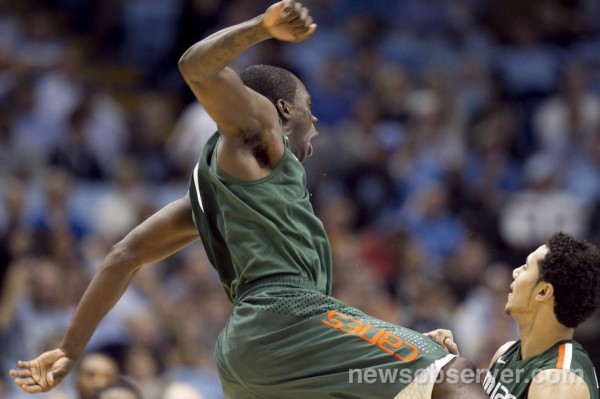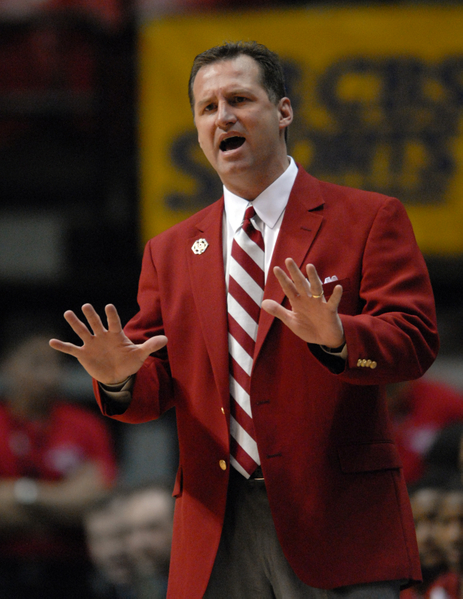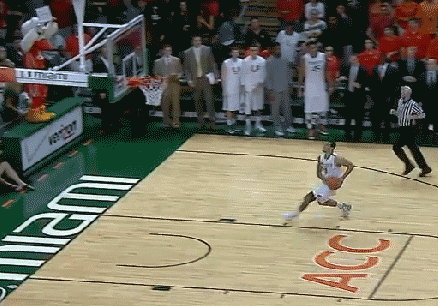Posted by mpatton on January 11th, 2013
Miami is finally here. The past two years the Hurricanes’ roster was better on paper than it ever performed on the court. This year it looks like they’re finally reaching that potential, despite Reggie Johnson‘s current absence from the lineup with a broken thumb. The Hurricanes will also contend with NC State for the ACC runner-up slot come March. Their success isn’t thanks to a flashy offense, which you might expect from a team with Shane Larkin at the helm — rather, it’s thanks to their physical defense.

Durand Scott’s toughness adds a lot to Miami’s backcourt. (Photo: Robert Willett / Raleigh News & Observer)
This is the first year the team has been in the top 50 in defensive efficiency since 2009, and it’s making a big difference. Statistically, the secret is two-fold: The Hurricanes shut down the interior (opponents are only 41% from inside the arc this season), and they don’t commit fouls. Visually, their experience plays a big role. Kenny Kadji and Julian Gamble are very good shot-blockers and their guards are athletic enough to stay in front of people. Experience combined with Jim Larranaga’s system allow the Hurricanes to play physically and avoid fouling. Offense is still a factor in Miami’s success. Miami runs Larkin or Durand Scott through at least one (often two) high ball screens per possession. Against North Carolina the Hurricanes’ offense looked bad most of the game. They shot too many threes, and there was no flow. After the game, Jim Larranaga made it sound like this was at least in part intentional: “When we play a team that pressures us and is going to be trapping the ball-handler, we share the ball and spread them out. And if you get an open three, you have the green light to shoot it.”
Read the rest of this entry »
| acc, microsites
| Tagged: durand scott, jim larranaga, julian gamble, kenny kadji, miami, miami (fl), north carolina, reggie johnson, rion brown, shane larkin, trey mckinney-jones
Share this story













































